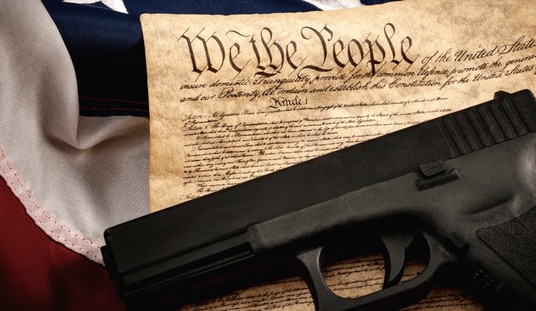California Attorney General Xavier Becerra has joined with gun control advocates in filing a federal lawsuit against the Bureau of Alcohol, Tobacco, Firearms, and Explosives, demanding that the agency begin classifying unfinished frames and receivers as “firearms” under federal law, which would require that they be serialized and that buyers undergo background checks when purchasing them from retailers.
It’s the second such lawsuit to be filed in recent months, with Everytown for Gun Safety backing a similar challenge to the BATFE’s regulations by the mayors of Chicago; Columbia, South Carolina; Syracuse, New York; and San Jose, California. The lawsuit filed by Becerra is being supported by the anti-gun group Giffords, and the organization’s litigation director Hannah Shearer claims that the BATFE’s regulations are allowing criminals to bypass federal laws in order to illicitly build their own guns.
““If you can assemble Ikea furniture, you can definitely build a ghost gun,” said Shearer of the Giffords Law Center. “This has opened the biggest loophole you can imagine in our federal and state gun laws.”
There are several problems with the arguments by Becerra, but the biggest issue for the gun control groups is that there’s no law being broken here, at least on the part of the BATFE. As the agency notes on its website, unfinished receivers (typically referred to as “80% receivers” because they’re only 80% complete) don’t meet the definition of a firearm as defined by the Gun Control Act of 1968.
ATF has long held that items such as receiver blanks, “castings” or “machined bodies” in which the fire-control cavity area is completely solid and un-machined have not reached the “stage of manufacture” which would result in the classification of a firearm according to the GCA.
Second Amendment advocates, including Brandon Combs of the Firearms Policy Coalition, were quick to respond to Becerra’s new lawsuit, calling it “frivolous” and an attack on law-abiding gun owners.
Combs, of the firearms organization, said the agency’s policy “is both legally sound and common sense. Under Becerra’s utterly absurd interpretation of law, flat pieces of metal at Home Depot would be treated as firearms and chunks of aluminum would be so-called ‘ghost guns’.”..
If the federal government changes its interpretation now, “All that does is turn a bunch of people into accidental criminals,” said Chuck Michel, an attorney representing the California Rifle and Pistol Association, which lobbies for gun owners’ rights.
Becerra claims that the ATF’s decision back in 2006 to re-classify unfinished frames and receivers as non-firearms was “arbitrary and capricious,” and claims that the Gun Control Act defines firearms not only as finished products but also items that are “designed to or may readily be converted” info firearms. That’s not quite the case. Here’s what the applicable federal statute actually says.
The term “firearm” means (A) any weapon (including a starter gun) which will or is designed to or may readily be converted to expel a projectile by the action of an explosive; (B) the frame or receiver of any such weapon; (C) any firearm muffler or firearm silencer; or (D) any destructive device. Such term does not include an antique firearm.
Clearly, an unfinished frame or receiver is not a firearm. In fact, under the GCA language, it’s not yet a receiver or a frame. It’s just a piece of metal. Becerra’s argument is that the unfinished products can be “readily converted” into a finished frame or receiver, which should make them subject to the provisions in the GCA. As firearms attorney Ryan Cleckner has previously pointed out, the GCA doesn’t provide a definition of what “readily converted” actually means.
It is clear in sub-section (A) above that a “weapon,” even one which is not able nor designed to fire a bullet, is still considered a firearm if it may be “readily converted” to do so. Therefore, the lowest threshold between what is and is not a firearm is not the ability to fire bullets but rather whether the “weapon” may be readily converted to do so.
Although the scope of what is considered a firearm extends beyond the present ability to perform an action and includes the potential future ability to perform that action after some modification, no similar treatment exists for determining what is or is not a frame or receiver. Sub-section (B) above provides that the frame or receiver of “any such ‘weapon’” described in sub-section (A) is a firearm. Therefore the completed frames or receivers of both “weapons” that shoot bullets and “weapons” that may be readily converted to shoot bullets are considered firearms. Therefore, one could argue that sub-section (B) of the definition of a firearm only includes objects which are currently frames or receivers since no statutory language exists which would include objects that could be frames or receivers in the future.
The “readily converted” standard only applies to “weapons.” According to the GCA, three types of “weapons” are firearms. They are those that will shoot bullets, those that are meant to shoot bullets, and those that can be “readily converted” to shoot bullets. It can be argued that if the starting object is not a “weapon,” it is irrelevant whether it may be readily converted to fire bullets. According to the GCA, only the frame or receiver of a “weapon” which may “readily be converted” to fire bullets is a firearm. There is no language addressing objects which may only be readily converted into a frames or receivers.
So, the Gun Control Act of 1968 doesn’t actually say what California’s attorney general says that it does, which is going to hamper his case going forward.
Another big issue with Becerra’s new lawsuit is that AR-15s and many other commonly-owned firearms don’t actually have a single component that meets the ATF’s definition of a “receiver” in the first place, which former ATF agent Dan O’Kelly has pointed out in several court cases. As CNN reported earlier this year:
The problem — and this is where O’Kelly comes in — is that he says roughly 60% of the guns in America do not have a single part that falls under that definition. The AR-15, for example, has a split receiver — one upper and one lower. Neither meets the requirement on its own.
“For 50 years, ATF has been making this square peg fit in the round hole,” O’Kelly told CNN, “when, in fact, it doesn’t.”
Since leaving the ATF in 2011, and forming his own firearms training and consulting firm, O’Kelly has been a paid expert witness in at least four cases in which he has detailed his view that the AR-15 and many other guns don’t have a single part that is subject to federal law and regulation.The first time was in 2014 after he got a call from a San Diego area lawyer asking his opinion about a case involving the seizure of approximately 6,000 polymer gun parts the ATF had determined were “receivers” under the law. The devices were taken as part of a criminal investigation into a Southern California-based company Ares Armor, which was suspected of dealing firearms without a license.The company’s owner at the time, Dimitri Karras, was never charged with a crime. His company later filed a civil lawsuit against the ATF seeking the return of his property. O’Kelly submitted a declaration in support of Karras’ lawsuit, stating that the lower receivers “had only two of the four features listed by the ATF in their own definition of a ‘receiver.’”He also noted that the definition failed to cover a long list of semi-automatic rifles and handguns, including the very popular Ruger .22 caliber pistol and Uzi-style rifles. The regulation, O’Kelly wrote, pertained mainly to a part found in manually operated weapons such as revolvers and pump action shotguns.He said the ATF’s attempt to classify the items seized from Ares Armor as receivers, as well as similar rulings in other cases, displayed “a lack of logic and consistency, which has created a climate in the firearm industry wherein it is nearly impossible for the reasonable man to be able to operate in good faith within the law.”The ATF returned 5,786 lower receivers to Karras two months after O’Kelly’s declaration was filed. The civil case was later dismissed.









